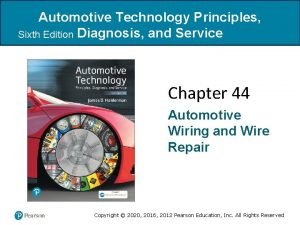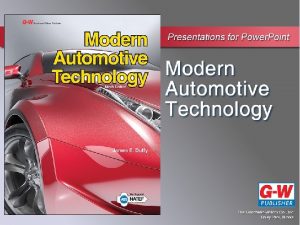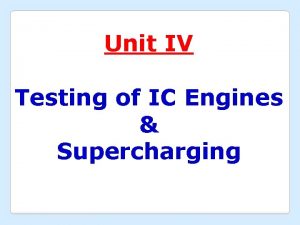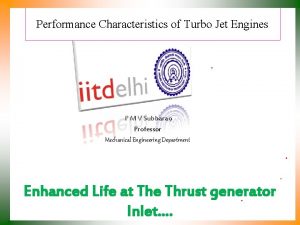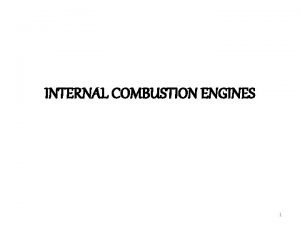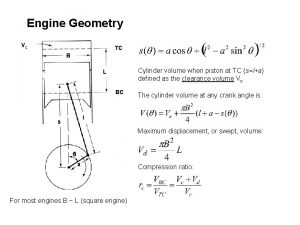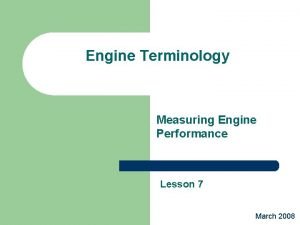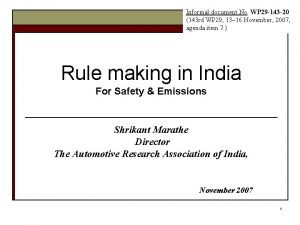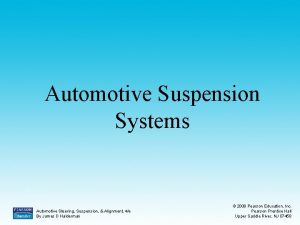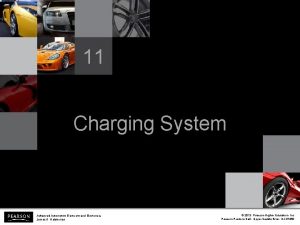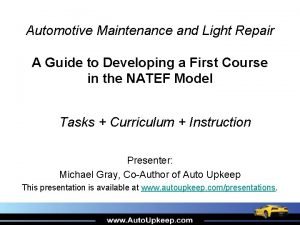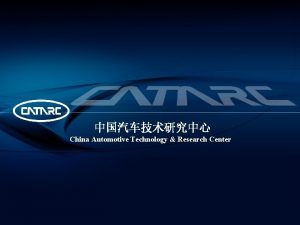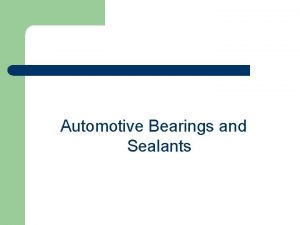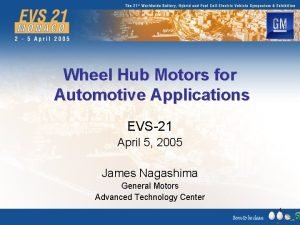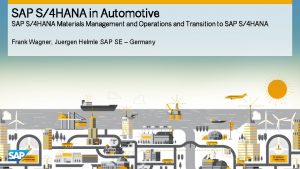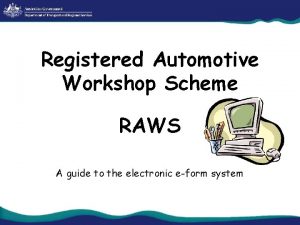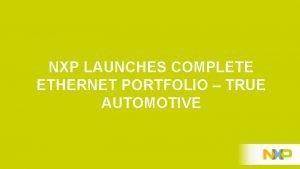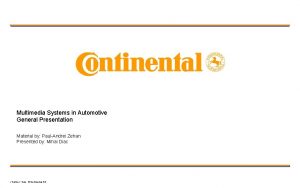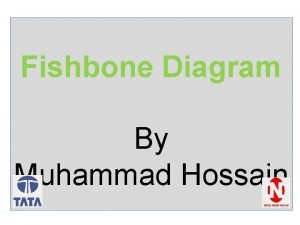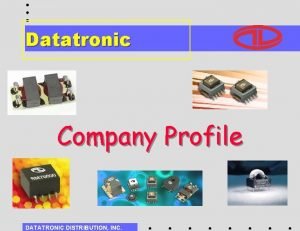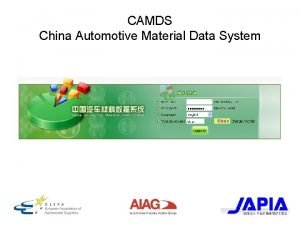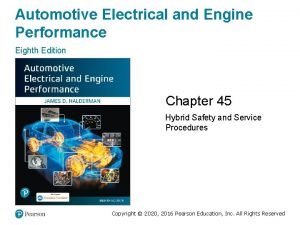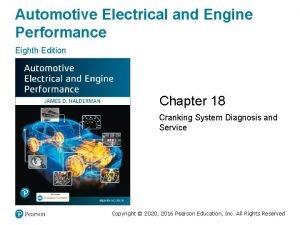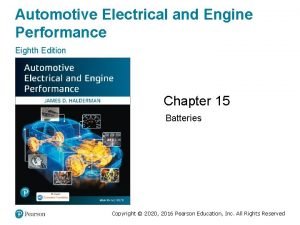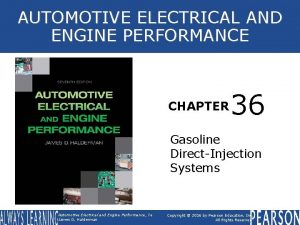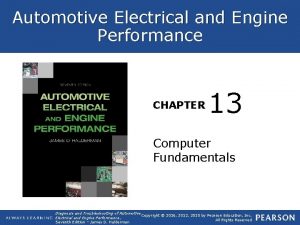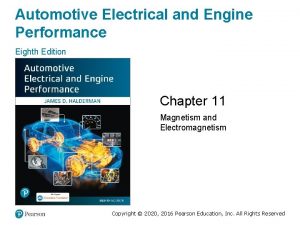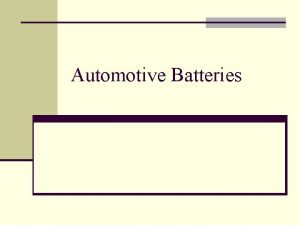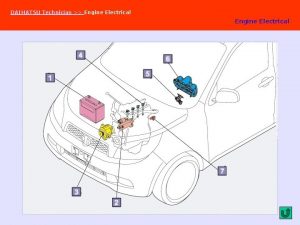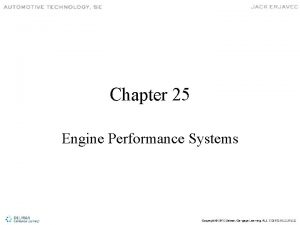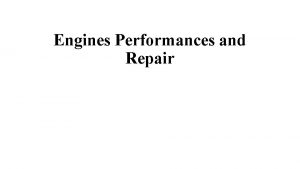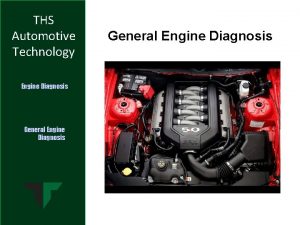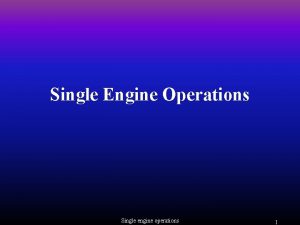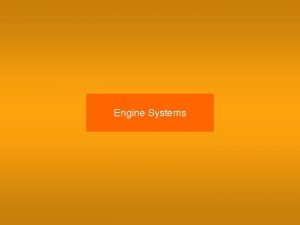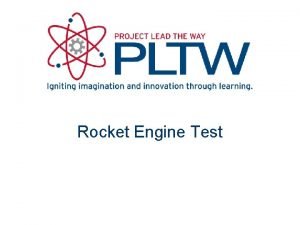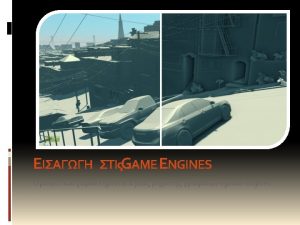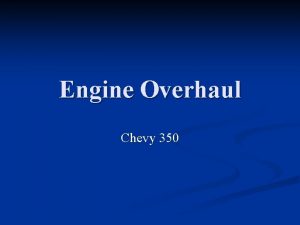AUTOMOTIVE ELECTRICAL AND ENGINE PERFORMANCE CHAPTER 14 CAN

































- Slides: 33

AUTOMOTIVE ELECTRICAL AND ENGINE PERFORMANCE CHAPTER 14 CAN and Network Communications Automotive Electrical and Engine Performance, 7 e James D. Halderman Copyright © 2016 by Pearson Education, Inc. All Rights Reserved

Figure 14. 1 Module communications make controlling multiple electrical devices and accessories easier by utilizing simple low-current switches to signal another module, which does the actual switching of the current to the device. Automotive Electrical and Engine Performance, 7 e James D. Halderman Copyright © 2016 by Pearson Education, Inc. All Rights Reserved

Figure 14. 2 A network allows all modules to communicate with other modules. Automotive Electrical and Engine Performance, 7 e James D. Halderman Copyright © 2016 by Pearson Education, Inc. All Rights Reserved

Figure 14. 3 A ring link network reduces the number of wires it takes to interconnect all of the modules. Automotive Electrical and Engine Performance, 7 e James D. Halderman Copyright © 2016 by Pearson Education, Inc. All Rights Reserved

Figure 14. 4 In a star link network, all of the modules are connected using splice packs. Automotive Electrical and Engine Performance, 7 e James D. Halderman Copyright © 2016 by Pearson Education, Inc. All Rights Reserved

Figure 14. 5 A typical BUS system showing module CAN communications and twisted pairs of wire. Automotive Electrical and Engine Performance, 7 e James D. Halderman Copyright © 2016 by Pearson Education, Inc. All Rights Reserved

Figure 14. 6 UART serial data master control module is connected to the data link connector at pin 9. Automotive Electrical and Engine Performance, 7 e James D. Halderman Copyright © 2016 by Pearson Education, Inc. All Rights Reserved

Figure 14. 7 The E & C serial data is connected to the data link connector (DLC) at pin 14. Automotive Electrical and Engine Performance, 7 e James D. Halderman Copyright © 2016 by Pearson Education, Inc. All Rights Reserved

Figure 14. 8 Class 2 serial data communication is accessible at the data link connector (DLC) at pin 2. Automotive Electrical and Engine Performance, 7 e James D. Halderman Copyright © 2016 by Pearson Education, Inc. All Rights Reserved

Figure 14. 9 Keyword 82 operates at a rate of 8, 192 bps, similar to UART, and keyword 2000 operates at a baud rate of 10, 400 bps (the same as a Class 2 communicator). Automotive Electrical and Engine Performance, 7 e James D. Halderman Copyright © 2016 by Pearson Education, Inc. All Rights Reserved

Figure 14. 10 GMLAN uses pins at terminals 6 and 14. Pin 1 is used for low-speed GMLAN on 2006 and newer GM vehicles. Automotive Electrical and Engine Performance, 7 e James D. Halderman Copyright © 2016 by Pearson Education, Inc. All Rights Reserved

Figure 14. 11 A twisted pair is used by several different network communications protocols to reduce interference that can be induced in the wiring from nearby electromagnetic sources. Automotive Electrical and Engine Performance, 7 e James D. Halderman Copyright © 2016 by Pearson Education, Inc. All Rights Reserved

Figure 14. 12 A CANDi module will flash the green LED rapidly if communication is detected. Automotive Electrical and Engine Performance, 7 e James D. Halderman Copyright © 2016 by Pearson Education, Inc. All Rights Reserved

Figure 14. 13 A Ford OBD-I diagnostic link connector showing that SCP communication uses terminals in cavities 1 (upper left) and 3 (lower left). Automotive Electrical and Engine Performance, 7 e James D. Halderman Copyright © 2016 by Pearson Education, Inc. All Rights Reserved

Figure 14. 14 A scan tool can be used to check communications with the SCP BUS through terminals 2 and 10 and to the other modules connected to terminal 7 of the data link connector (DLC). Automotive Electrical and Engine Performance, 7 e James D. Halderman Copyright © 2016 by Pearson Education, Inc. All Rights Reserved

Figure 14. 15 Many Fords use UBP module communications along with CAN. Automotive Electrical and Engine Performance, 7 e James D. Halderman Copyright © 2016 by Pearson Education, Inc. All Rights Reserved

Figure 14. 16 CCD signals are labeled plus (+) and minus (-) and use a twisted pair of wires. Notice that terminals 3 and 11 of the data link connector are used to access the CCD BUS from a scan tool. Pin 16 is used to supply 12 volts to the scan tool. Automotive Electrical and Engine Performance, 7 e James D. Halderman Copyright © 2016 by Pearson Education, Inc. All Rights Reserved

Figure 14. 17 The differential voltage for the CCD BUS is created by using resistors in a module. Automotive Electrical and Engine Performance, 7 e James D. Halderman Copyright © 2016 by Pearson Education, Inc. All Rights Reserved

Figure 14. 18 Many Chrysler vehicles use both SCI and CCD for module communication. Automotive Electrical and Engine Performance, 7 e James D. Halderman Copyright © 2016 by Pearson Education, Inc. All Rights Reserved

Figure 14. 19 CAN uses a differential type of module communication where the voltage on one wire is the equal but opposite voltage on the other wire. Automotive Electrical and Engine Performance, 7 e James D. Halderman Copyright © 2016 by Pearson Education, Inc. All Rights Reserved

Figure 14. 20 A typical (generic) system showing how the CAN BUS is connected to various electrical accessories and systems in the vehicle. Automotive Electrical and Engine Performance, 7 e James D. Halderman Copyright © 2016 by Pearson Education, Inc. All Rights Reserved

Figure 14. 21 A DLC from a pre-CAN Acura. It shows terminals in cavities 4, 5 (grounds), 7, 10, 14, and 16 (B+). Automotive Electrical and Engine Performance, 7 e James D. Halderman Copyright © 2016 by Pearson Education, Inc. All Rights Reserved

Figure 14. 22 A Honda scan display showing a B and two U codes, all indicating a BUS-related problem(s). Automotive Electrical and Engine Performance, 7 e James D. Halderman Copyright © 2016 by Pearson Education, Inc. All Rights Reserved

Figure 14. 23 A typical 38 -cavity diagnostic connector as found on many BMW and Mercedes vehicles under the hood. Automotive Electrical and Engine Performance, 7 e James D. Halderman Copyright © 2016 by Pearson Education, Inc. All Rights Reserved

Figure 14. 24 A breakout box (BOB) used to access the BUS terminals while using a scan tool to activate the modules. Automotive Electrical and Engine Performance, 7 e James D. Halderman Copyright © 2016 by Pearson Education, Inc. All Rights Reserved

Figure 14. 25 This Honda scan tool allows the technician to turn on individual lights and operate individual power windows. Automotive Electrical and Engine Performance, 7 e James D. Halderman Copyright © 2016 by Pearson Education, Inc. All Rights Reserved

Figure 14. 26 Modules used in a General Motors vehicle can be “pinged” using a Tech 2 scan tool. Automotive Electrical and Engine Performance, 7 e James D. Halderman Copyright © 2016 by Pearson Education, Inc. All Rights Reserved

Figure 14. 27 Checking the terminating resistors using an ohmmeter at the DLC. Automotive Electrical and Engine Performance, 7 e James D. Halderman Copyright © 2016 by Pearson Education, Inc. All Rights Reserved

Figure 14. 28 Use front-probe terminals to access the data link connector. Automotive Electrical and Engine Performance, 7 e James D. Halderman Copyright © 2016 by Pearson Education, Inc. All Rights Reserved

Figure 14. 29 A Data is sent in packets, so it is normal to see activity and then a flat line between messages. Automotive Electrical and Engine Performance, 7 e James D. Halderman Copyright © 2016 by Pearson Education, Inc. All Rights Reserved

Figure 14. 29 B A CAN BUS should show voltages that are opposite when there is normal communications. Automotive Electrical and Engine Performance, 7 e James D. Halderman Copyright © 2016 by Pearson Education, Inc. All Rights Reserved

Figure 14. 30 A 16 pin OBD-II DLC with terminals identified. Scan tools use the power pin (16) and ground pin (4) for power so that a separate cigarette lighter plug is not necessary on OBD-II vehicles. Automotive Electrical and Engine Performance, 7 e James D. Halderman Copyright © 2016 by Pearson Education, Inc. All Rights Reserved

Figure 14. 31 This schematic of a Chevrolet Equinox shows that the vehicle uses a GMLAN BUS (DLC pins 6 and 14), plus a Class 2 (pin 2) and UART. Pin 1 connects to the low speed GMLAN network. Automotive Electrical and Engine Performance, 7 e James D. Halderman Copyright © 2016 by Pearson Education, Inc. All Rights Reserved
 Internal combustion vs external combustion
Internal combustion vs external combustion Chapter 44 automotive wiring and wire repair
Chapter 44 automotive wiring and wire repair Chapter 2 automotive careers and ase certification
Chapter 2 automotive careers and ase certification Automotive technology chapter 51 answers
Automotive technology chapter 51 answers Performance curve of ic engine
Performance curve of ic engine Performance characteristics of turbojet engine
Performance characteristics of turbojet engine Engine performance parameters
Engine performance parameters Engine performance map
Engine performance map Small engine performance
Small engine performance Indicated horsepower formula
Indicated horsepower formula Automotive regulations and standards
Automotive regulations and standards Automotive technology sixth edition
Automotive technology sixth edition Halderman
Halderman Advanced automotive electric
Advanced automotive electric Auto upkeep answer key
Auto upkeep answer key Automotive fasteners gaskets and sealants
Automotive fasteners gaskets and sealants China automotive technology and research center
China automotive technology and research center Chapter 8 fasteners gaskets seals and sealants
Chapter 8 fasteners gaskets seals and sealants Types of sealants used in automotive
Types of sealants used in automotive Automotive heating and air conditioning 8th edition
Automotive heating and air conditioning 8th edition If 16 700 j of work is done
If 16 700 j of work is done Behaviorally anchored rating scales
Behaviorally anchored rating scales Performance levels
Performance levels Jcids manual 2018
Jcids manual 2018 Wheel hub motors for automotive applications
Wheel hub motors for automotive applications Nsf engineering sdn bhd
Nsf engineering sdn bhd Sap hana automotive
Sap hana automotive Raws workshop
Raws workshop True automotive
True automotive V cycle automotive
V cycle automotive Automotive aftermarket solutions
Automotive aftermarket solutions Fishbone diagram for poor customer service
Fishbone diagram for poor customer service Datatronic automotive
Datatronic automotive China automotive material data system
China automotive material data system

